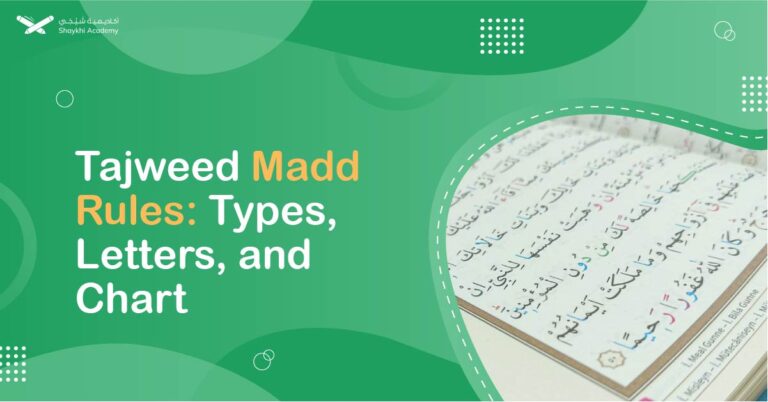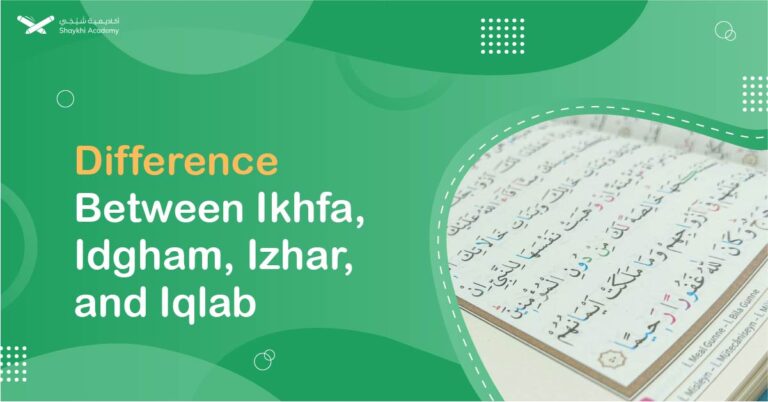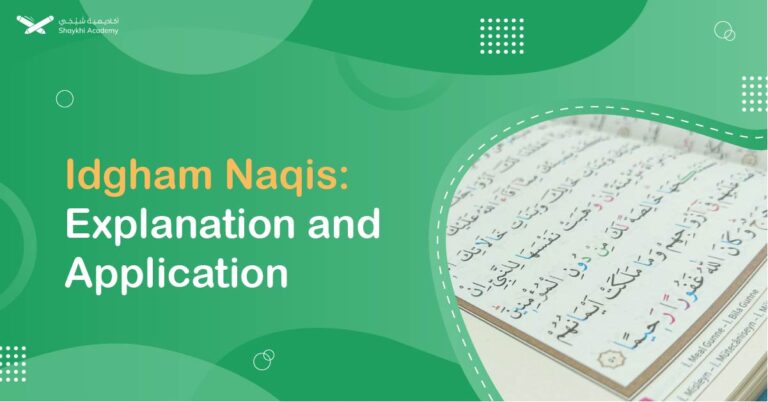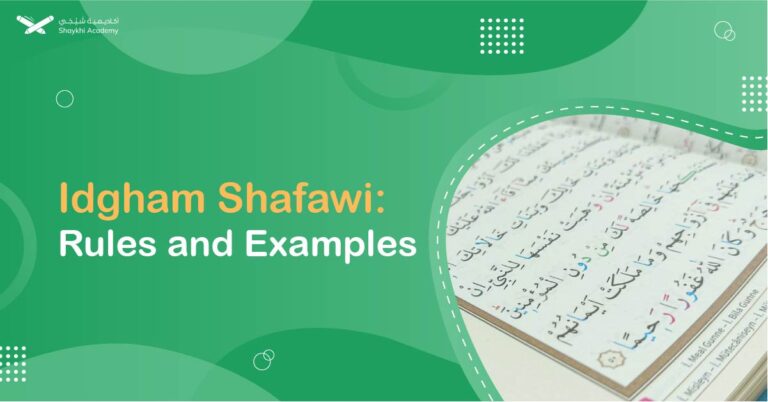
Madd Rules In Tajweed: Types Of Madd, Letters, With Chart And Examples
Madd, or elongation, in Tajweed, refers to extending the sound of a vowel or certain soft consonants. There are two

Madd, or elongation, in Tajweed, refers to extending the sound of a vowel or certain soft consonants. There are two

Difference Between Ikhfaa, Idgham, Izhar, And Iqlab: The main difference is that Ikhfaa partially conceals with nasalization, Idgham merges letters

Idgham Kamel is one of the several types of Idgham, it involves the complete merging of a preceding letter with

Idgham Naqis, a subcategory of Idgham, signifies partial merging of letters where Noon Saakinah (نْ) or Tanween (ً ٍ ٌ)

Idgham with Ghunnah involves merging a letter with a nasal sound, primarily using “ي” (ya), “ن” (noon), “م” (meem), and

Idgham Shafawi, a key concept in Tajweed, involves the merging of two Meem letters, creating a seamless, prolonged sound. This

Do You know The Idgham meaning? Ever wondered how beautifully the Quran flows when recited? There’s a reason for that!

Ikhfaa Shafawi, a rule in Tajweed, involves concealing the pronunciation of the silent letter “Meem” when it appears at the

Ikhfaa, an essential rule in Tajweed, involves concealing the pronunciation of certain consonants when preceded by noon sakinah or tanween.

In Tajweed, Noon and Meem Mushaddad are critical rules marked by a shaddah (ّ), which indicates the doubling of these

Noon Sakinah and Tanween have four main rules: Izhar, Iqlab, Idgham, and Ikhfa. Saakin, indicating no vowel sound, is crucial

In Tajweed, Meem Sakinah, a vowelless Meem, follows three main rules: Izhar Shafawi for clear pronunciation except before Meem and